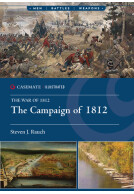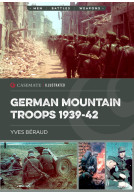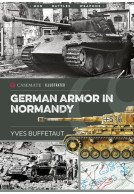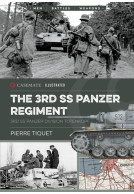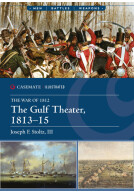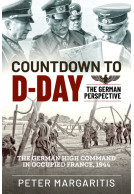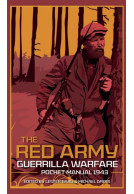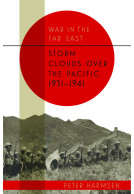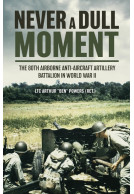The Canadian Theater, 1813 (Paperback)
Imprint: Casemate Publishers
Series: Casemate Illustrated
Pages: 96
Illustrations: 80+ photographs, illustrations and maps
ISBN: 9781636245423
Published: 15th April 2025
Series: Casemate Illustrated
Pages: 96
Illustrations: 80+ photographs, illustrations and maps
ISBN: 9781636245423
Published: 15th April 2025
Usually available in 6-8 weeks.
You'll be £15.96 closer to your next £10.00 credit when you purchase The Canadian Theater, 1813. What's this?
+£4.99 UK Delivery or free UK delivery if order is over £40
(click here for international delivery rates)
Order within the next 3 hours, 40 minutes to get your order processed the next working day!
Need a currency converter? Check XE.com for live rates
(click here for international delivery rates)
Order within the next 3 hours, 40 minutes to get your order processed the next working day!
Need a currency converter? Check XE.com for live rates
America had gone to war in June 1812 confident that the conquest of Canada would be swift and decisive. However, ill-prepared and hindered by inexperienced leaders, untrained troops, and a lack of resources, the United States quickly found itself on the defensive, suffering major setbacks at Detroit, Queenston, and the River Raisin. By the end of the year, British and Canadian forces stood firm, and some American-held territories had even fallen to the British. Recognizing the need for significant change, President James Madison’s administration took steps to reform the army and improve recruitment, pay, and supply logistics. In an important shift, the U.S. Navy bolstered its role by appointing Captain Isaac Chauncey to build a fleet on the Great Lakes.
Chauncey’s efforts set off a naval arms race that became crucial to American operations in the Northwest. Meanwhile, Congress expanded the army, adding new regiments, reorganizing recruitment, and improving pay. Unfortunately the desperate need for troops on the front line mean that companies were marched off as soon as assembled and a regiment therefore rarely had all its companies assembled.
American forces launched multiple operations in the Canadian theater in 1813, including the raid on York, the capture of Fort George, defensive battles in the Northwest, naval battles on Lake Ontario and the failed Montreal advance but these engagements provided only limited gains. Strategic errors, supply issues, and weak leadership undercut potential victories, leaving the war’s outcome uncertain.
This illustrated history provides a clear account of the 1813 campaign, examining key battles, strategic shifts, and the efforts to strengthen American forces amid ongoing setbacks. Despite limited progress, the trials of 1813 allowed Madison to identify rising officers like Brown and Scott, who would bring hard-won experience to the coming year’s campaigns.
Customers who bought this title also bought...
Other titles in the series...
Other titles in Casemate Publishers...









